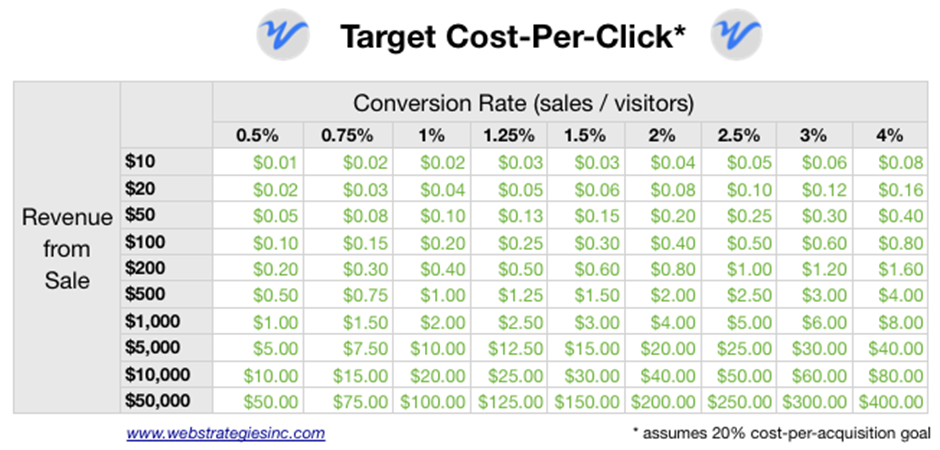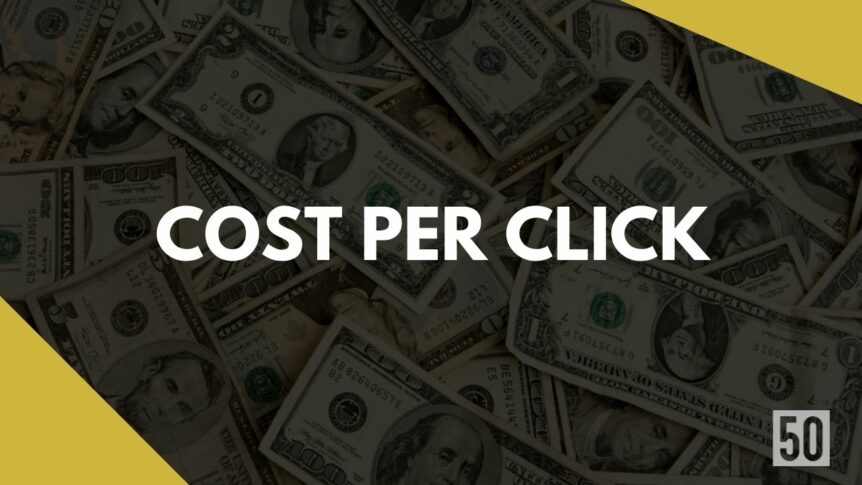Are you looking for a cost-effective way to drive more traffic and sales to your website? If so, cost per click (CPC) advertising may be the answer. CPC is an online ad model where advertisers pay a fixed fee every time their ads are clicked. This innovative model allows businesses of all sizes to quickly scale up their ad campaigns without sacrificing quality and results. In this ultimate guide, we’ll explore how CPC works, how it can help you reach your business goals, and important tips for maximizing ROI with CPC ads. Get ready to learn about one of the most powerful digital marketing techniques available today – cost per click!
What is Cost Per Click?
Cost per click (CPC) is an effective way for websites to generate revenue from advertisers. Visitors only pay each time they click on a display ad, making it more cost-effective than the cost per mille (CPM) model, which charges by ad impressions. That means whether or not someone views or clicks on the ad doesn’t impact your wallet. CPC also goes by the name pay-per-click (PPC), and is a great option for smaller budgets who want to maximize their ad exposure potential with minimal cost and effort.
Why Is It Important For Startups To Track This Metric?
Tracking Cost-per-click (CPC) for startups is an integral part of any successful business strategy, as it enables companies to find out which of their products or services brings in the highest profits.
CPC tracking allows startups to see which ads they’re running that are driving sales, and more importantly, which ones aren’t delivering results. Knowing what works and what doesn’t incentivizes a company to allocate resources more effectively and pinpoint any areas where performance needs to be improved in order to maximize profitability.
By keeping tabs on their CPC, startups can also track their expenses to make sure they don’t exceed their budget and are able to accurately measure their return on investment (ROI).
Ultimately, CPC tracking helps startups maximize both their customer base and bottom line by providing an insight into how well the company’s marketing and advertising efforts are performing.
How do you calculate Cost Per Click?
Here is the formula:
Advertising Campaign Cost / Number of Clicks
While some other methods of calculating CPC can be used, the most common formula is relatively straightforward: simply divide your total campaign cost by the number of clicks you’ve received. By using this simple formula, it’s easy to quickly see if and how your investments are yielding results—and modify any areas that need improvement if they aren’t. Ultimately, this formula simplifies and consolidates the process of measuring CPC, so businesses can quickly get an accurate figure and make informed decisions moving forward.
What factors affect Cost Per Click?
Here are the factors that affect cost per click:
Quality Score
This is a measure of the relevancy and quality of your ad, landing page, and keyword targeting. The better the quality score, the lower cost per click you can expect.
Competition
The more competition there is for a given keyword or phrase, the higher its cost will be.
Bid Strategy
Different ad networks use different bidding strategies, such as cost-per-click (CPC) or cost-per-thousand impressions (CPM). Each strategy has its own pricing structure and will affect the cost per click you can expect to pay.
Targeting Options
If you’re targeting a specific segment of your audience, such as users in a certain geographic region or with particular interests, you may pay more for clicks.
Click-Through-Rate (CTR)
The higher your CTR, the lower cost per click you can expect to pay. This is because advertisers are charged less when their ads are more relevant and more likely to be clicked on.
Ad Format
Different ad formats, such as text ads or display ads, will have different costs per click associated with them.
Seasonality
Campaigns that run during peak seasons, such as the holiday season or a big event like the Super Bowl, may cost more per click due to the increased demand.
Overall, understanding these factors is key to managing your cost per click and getting the most out of your ad campaigns. By monitoring and optimizing these areas, you can maximize your return on investment (ROI) while keeping costs under control.
What are the effects of Cost Per Click on a startup?
These are the effects of CPC on a startup:
Increased cost of acquisition
Since startups typically have a limited advertising budget, the cost per click (CPC) for their ad campaigns can quickly add up. This may mean that it is not feasible to run ads on certain platforms or even at certain times of day due to the high CPC costs.
Difficulties in targeting the right audience
Depending on the platform and CPC costs, startups may not have enough resources to properly target their desired audience. This means that it is difficult to get in front of potential customers who are likely to take action.
Time-consuming optimization
To make sure that your CPC campaigns are successful, you need to constantly monitor, track, and optimize them. This can be a time-consuming process, especially for startups that don’t have the resources to devote to it.
Lower Return on Investment (ROI)
Due to all of these factors mentioned above, CPC campaigns may not deliver as high an ROI as other forms of advertising such as SEO and content marketing. This means that startups may not always be able to get the most out of their investment.
Overall, cost per click can have both positive and negative impacts on a startup’s advertising efforts. Startups need to weigh the pros and cons before deciding whether this form of marketing is right for their business. With careful planning and execution, CPC campaigns can prove to be a powerful addition to a startup’s marketing mix.
What is a good Cost Per Click?
The definition of a good Cost Per Click (CPC) means different things to everyone. In its simplest form, it’s the amount of money you are willing to pay for each click that comes to your website or online ad. It is important to choose an accurately balanced CPC rate, as it could be either too high and lead to unnecessary expenditures or too low and yield inferior results.
To ensure the right balance, it is essential to consider the potential income return alongside the costs. This requires good understanding of your target audience and market landscape. However, at maximum efficiency a good CPC should translate into more clicks for less cost; yielding higher ROI on your marketing campaigns and leaving more money in your pocket!
What are examples of CPC?
Advertising can be a complicated and expensive task, especially if you’re trying to acquire high-value customers. To make sure you don’t break the bank, it’s important to understand the concept of cost per click (CPC).
For example, if your product sells for $20,000 and your website can convert one out of every 200 ad clicks into a sale, then you should target a CPC rate of $20 in order to maintain that sought-after 5:1 ratio. This would amount to spending $4,000 in ad costs in order to acquire that $20,000 sale. However, if your product is much less expensive—like say $200—then you wouldn’t want to invest as much money in advertising fees. In this case, aiming for a CPC of around $0.80 would result in fifty clicks providing one sale worth $200; That could help maintain the 5:1 ratio without breaking the bank!

Strategies To Improve CPC
Here is how you can improve your CPC:
Target the right keywords
To maximize your Return-on-Investment, it is important to use efficient keyword research tools such as Google Keyword Planner or SEMRush to identify relevant and profitable keywords. It is wise to focus on long tail keywords that are more specific and tend to result in better quality leads.
Monitor competitor bids and strategies
It is important to know what your competitors are doing in terms of bidding on keywords that can be beneficial for your campaigns. You can use tools such as Adbeat or WhatRunsWhere to monitor their strategies and bid accordingly.
Optimize landing pages
An optimized landing page can drastically improve the quality of your clicks, thus improving the overall CPC. Make sure your landing page is relevant to the keyword and addresses the searcher’s query with a clear call-to-action.
Use ad extensions
Ad extensions are an easy way of adding extra information to ads without needing additional space or extra cost. This creates more visibility for your ads, thus improving CTR and CPC.
Test different ad formats
Split-testing different ad formats is a great way of understanding which type of ad works best for your campaigns. Research to find out what type of display or search ads performs well in your niche and accordingly test various versions until you get the desired results.
Increase bids for relevant keywords
Increasing your bid on targeted high-value keywords is a great way to improve CPC and increase visibility of ads. However, make sure not to overbid and get into a bidding war as it can backfire and result in higher costs for you.
Leverage remarketing
Remarketing helps target potential customers who have already visited your website or engaged with your brand but haven’t converted. This is a great way to reach out to them again, driving sales and improving CPC.
Optimize ad formats for mobile devices
Mobile advertising is becoming increasingly important as the majority of users access websites on their phones. Optimizing ads for mobile devices can attract more traffic and improve CPC due to the increased visibility.
Use automated bidding strategies
Automated bidding is a great way of improving CPC without having to manually adjust bids. Automation tools such as Google Ads or Facebook Ads Manager allow you to set up rules that automate bid adjustments based on different parameters.
Monitor and analyze results
Finally, it is important to constantly monitor and analyze CPC performance by keeping track of key metrics such as click-through rate, cost per conversion, and return on ad spend. This will help you determine which strategies are working best for improving your campaigns and reach optimal CPCs.
Conclusion
Cost per click (CPC) is one of the most important concepts in online advertising. By understanding how CPC works, you can plan your budget and bids more effectively, resulting in a higher ROI for your campaigns. The Ultimate Guide to Cost Per Click will teach you everything you need to know about this essential metric, including how to calculate it, what factors influence it, and how to use it to your advantage.

